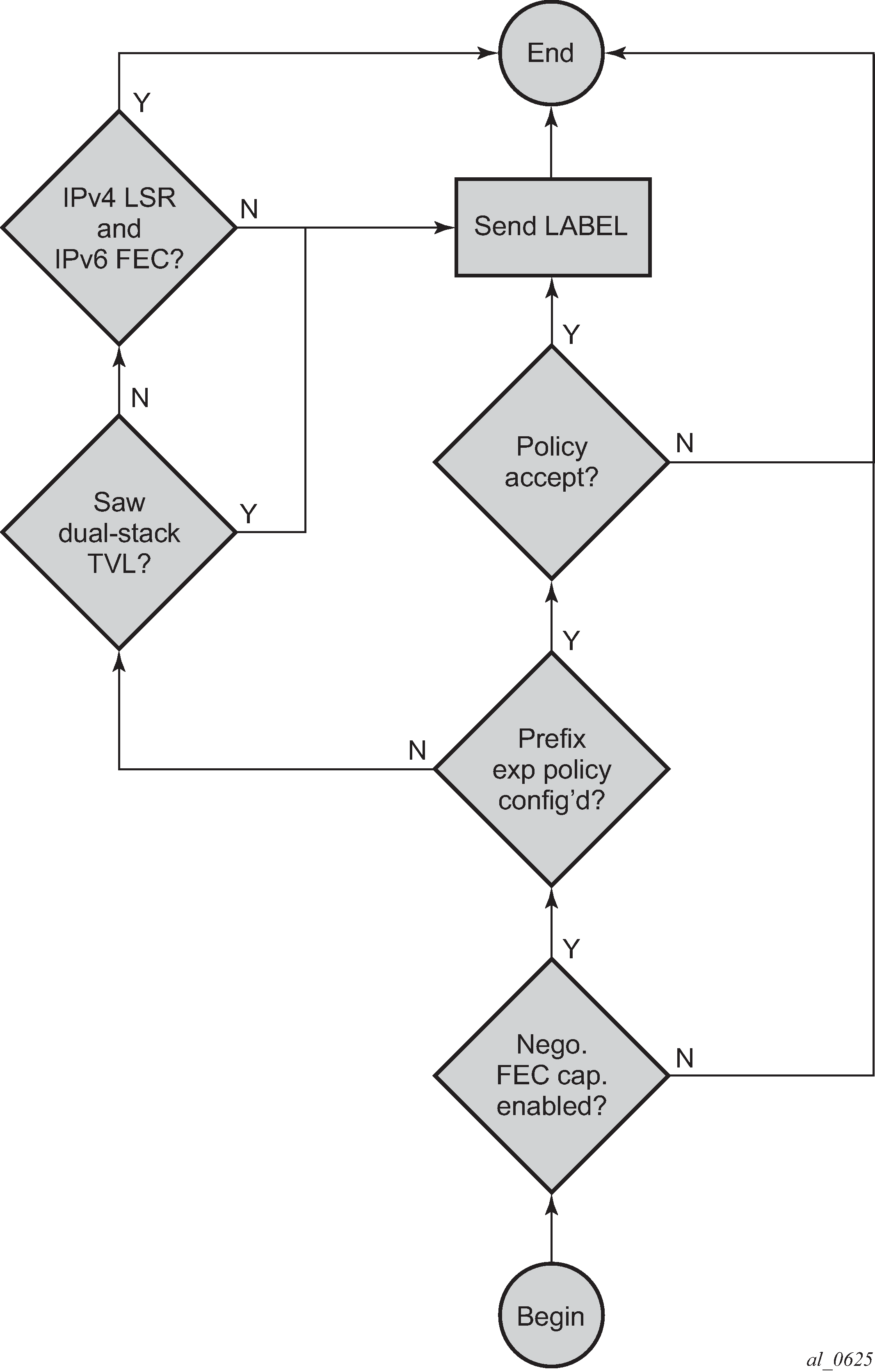After an LDP LSR initializes the LDP session to the peer LSR and the session comes up, local IPv4 and IPv6 interface addresses are exchanged using the Address and Address Withdraw messages. Similarly, FECs are exchanged using Label Mapping messages.
By default, IPv6 address distribution is determined by whether the Dual-stack capability TLV, which is defined in RFC 7552, is present in the Hello message from the peer. This coupling is introduced because of interoperability issues found with existing third-party LDP IPv4 implementations.
The following is the detailed behavior:
If the peer sent the dual-stack capability TLV in the Hello message, then IPv6 local addresses are sent to the peer. The user can configure a new address export policy to further restrict which local IPv6 interface addresses to send to the peer. If the peer explicitly stated enabling of LDP IPv6 FEC type by including the IPv6 SAC TLV with the D-bit (Disable-bit) set to 0 in the initialization message, then IPv6 FECs are sent to the peer. FEC prefix export policies can be used to restrict which LDP IPv6 FEC can be sent to the peer.
If the peer sent the dual-stack capability TLV in the Hello message, but explicitly stated disabling of LDP IPv6 FEC type by including the IPv6 SAC TLV with the D-bit (Disable-bit) set to 1 in the initialization message, then IPv6 FECs are not sent but IPv6 local addresses are sent to the peer. A CLI is provided to allow the configuration of an address export policy to further restrict which local IPv6 interface addresses to send to the peer. FEC prefix export policy has no effect because the peer explicitly requested disabling the IPv6 FEC type advertisement.
If the peer did not send the dual-stack capability TLV in the Hello message, then no IPv6 addresses or IPv6 FECs are sent to that peer, regardless of the presence or not of the IPv6 SAC TLV in the initialization message. This case is added to prevent interoperability issues with existing third-party LDP IPv4 implementations. The user can override this by explicitly configuring an address export policy and a FEC export policy to select which addresses and FECs to send to the peer.
The above behavior applies to LDP IPv4 and IPv6 addresses and FECs. The procedure is summarized in the flowchart diagrams in Figure: LDP IPv6 address and FEC distribution procedure and Figure: LDP IPv6 address and FEC distribution procedure.

